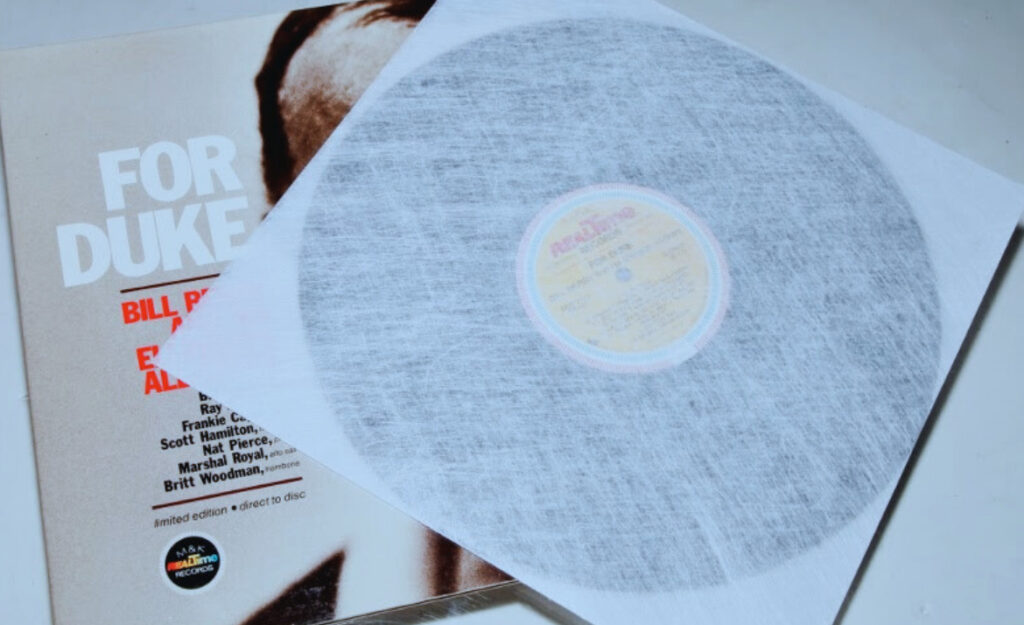
Cracking open a box of vinyl records can feel like rediscovering treasures you’d forgotten about. For anyone who wants that excitement to last, understanding archival materials vinyl enthusiasts recommend is key to long-term enjoyment and preservation.
Preserving your prized collection doesn’t just mean careful listening; smart material choices protect against dust, humidity, and scratches. Vinyl lovers invest in specific products because they know the wrong supplies can damage sound and value.
The right advice can transform your collection’s future. Dive in as this article covers trusted archival solutions, practical storage habits, and real-life tips that’ll keep your records safe and sounding great for decades.
Choosing the Perfect Inner Sleeves Builds Your Collection’s Foundation
Reliable inner sleeves form your records’ first line of defense. Seasoned collectors look for sleeves that prevent scuffs, static, and contaminants—instead of using paper alone. Select materials wisely to keep grooves clean.
Polyethylene, polypropylene, and rice paper blends all have distinct strengths and weaknesses. Explore what top vinyl collectors use, and see which inner sleeve type matches both your needs and collecting style.
Polyethylene Inner Sleeves: Everyday Protection That’s Easy to Use
Polyethylene sleeves are popular because they slide smoothly and don’t cost much. You can simply swap out old paper sleeves for these and instantly cut down static buildup. The material doesn’t attract as many dust particles.
During dry seasons, a collector might say, “Switching to poly sleeves stopped the constant dust storms on my albums.” That means fewer playtime interruptions and longer life for both records and stylus.
For daily users, polyethylene sleeves are a budget-savvy way to start protecting a growing archive. Just watch for occasional cloudiness and replace as needed for absolute clarity.
Polypropylene and Rice Paper: Go-to Choices for Audiophile-Grade Archives
Polypropylene sleeves bring added clarity and rigidness, ideal if you want your collection to look sharp in both storage and show. These sleeves are more transparent and resist hazing over time.
Rice paper sleeves combine an archival-quality layer with extra static control. The multi-layer design cradles records and prevents micro-abrasions, which makes them a top choice in many audiophile circles.
Quotes like, “My favorite pressings always get the rice paper treatment,” show these are the go-to for prized records. They cost more but deliver unbeatable protection for rare finds.
| Material | Pros | Cons | Best For |
|---|---|---|---|
| Polyethylene | Affordable, low static, decent clarity | Prone to wrinkling, mild clouding | Everyday use, growing collections |
| Polypropylene | Crisp clarity, more rigid, long-lasting | Higher cost, less available | Showcase albums, presentation |
| Rice Paper Composite | Archival quality, static resistant | Expensive, can wrinkle | High-value or rare pressings |
| Basic Paper | Cheap, easy to find | Dust, scratches, acidic risk | Temporary storage, bulk lots |
| Anti-Static Poly Lined | Hybrid of paper and plastic benefits | Layer separation risk | Transitional upgrades, humid climates |
Outer Sleeves Prevent Surface Damage and Block UV
Clear, snug-fitting outer sleeves give album covers vital protection against scuffs, spills, and sunlight. Choosing archival materials vinyl fans trust for outers means your art and titles always stay visible and undamaged.
Premium polyethylene or polypropylene sleeves keep boxes and jackets crisp for the long haul. Let’s see how different options work, and which features save your favorite cover art from fading or ring wear.
Key Features to Look for in Outer Sleeves
Durable outer sleeves should feel thick and flexible—never crinkly or sticky. Archival-grade sleeves won’t yellow or attract dust. Opt for 3-mil or thicker sleeves to get robust protection and confident handling.
- Choose sleeves with seams on one side only to avoid edge splits and maintain a tidy, flat layer for stacking albums safely.
- Look for flapless, resealable, or flap-with-adhesive designs, considering how often you access albums and avoiding sticky residue on covers or records.
- Select sleeves sized for single, double, and gatefold albums, measuring the spines of thicker box sets to prevent cramming or warping of the outer jackets.
- Order acid-free, UV-resistant sleeves for collections with vintage or signed covers, ensuring timeless display quality and minimizing yellowing over time.
- Test fit flexibility for gatefolds and oversized LPs by sliding in without forcing the vinyl, then store vertically for even weight distribution across shelves.
Vinyl fans who value cover art preservation swear by these subtleties since they protect both aesthetic and resale value. Each detail helps avoid heart-sinking creases and fading.
Long-Term Storage Habits Extend Record Life
Sleeving isn’t a one-and-done task. Inspect every cover for humidity or heat exposure before sleeving, then stand albums upright—never stacked—to reduce warping pressure inside the sleeves.
- Resleeve any jackets softened by moisture, and rotate their position occasionally to ensure fresh air and consistent support for all records in the series.
- Log conditions in a simple spreadsheet with columns for date, humidity, and sleeve material type; adjust as needed to keep a consistent archival environment.
- When swapping outer sleeves, gently support spines on both sides. Avoid aggressive pulling that might stress seams or corners, preserving print and color vibrancy.
- Store sleeves out of direct sunlight, ideally in shaded or interior spaces, to reduce thermal cycling and sun bleaching, which fade vinyl covers irreversibly.
- Label each outer sleeve discreetly with archival ink or acid-free stickers if you keep multiple editions, enabling fast identification without repeated handling.
Savvy archival maintenance routines like these keep construction solid and artwork crisp so you get that new-album feeling every time you visit your shelf.
Humidity and Temperature Control Stabilizes Your Collection
Stable storage rooms for archival materials vinyl collectors rely on require tight climate control. Unchecked humidity or temperature swings warp records, degrade covers, and shorten archival life.
Whether in basements, bedrooms, or studios, following tested environmental standards makes preserving vinyl almost automatic.
Climate Control Tools and Their Impact
Hygrometers and digital thermometers let you measure and track your room’s conditions. Vinyl stays flat and silent between 45–55 percent relative humidity and 65–70 degrees Fahrenheit, preventing both warping and mold.
Desiccant packs or silica gel supplement climate control. Tuck these discreetly in cabinets for extra moisture relief. Replace them periodically to handle high-summer or winter changes, ensuring the collection is always safe.
Sealed storage cases, air-purifiers, and AC units boost stability. Vinyl archivists set up alerts for climate spikes, so immediate action—like closing curtains or running a dehumidifier—becomes second nature before issues arise.
Dealing With Unexpected Weather Events
Collectors living in older homes remodel their storage after firsthand scares. “The time my basement flooded, I moved every record to the top shelf.” Preventative placement matters.
Elevate collection shelves at least six inches above floors, and use waterproof shelving where leaks might happen. Vinyl placed too near baseboards or vents risks unseen damage and difficult recovery.
Regular checks after storms or heavy rain, plus an emergency plan for quick relocation, keep records safe. Relabeling boxes with color codes helps in dark or power-out conditions.
Handling Records Correctly Minimizes Surface Wear and Static
Developing safe handling habits for your collection pays back in sparkle and sound. Minimize fingerprints and static with small, mindful changes that even beginners can start using during every session.
Each gentle touch or cleaning method adds years to archival materials vinyl aficionados want to keep flawless—not just playable. See what tactics work best for modern collections.
Precise Hand Placement Prevents Trace Damage
Grip albums by the edge and inner label only. Pressing fingers onto grooves attracts oils, leaving permanent residue. This easy fix is one reason archives make gloves standard for staff.
A collector might explain, “Since switching to label-only handling, I stopped seeing mysterious pops and ticks.” You’ll notice surface wear drops when everyone sticks with this small habit.
Practice transferring records from sleeve to platter without touching the vinyl’s playing surface. You’ll find this simple skill streamlines both cleaning and playback.
Static and Dust Removal Tips for Play-Ready Records
Use a carbon-fiber brush before each play session, brushing lightly in a spiral. This quick step removes debris without grinding it into the groove or creating electrostatic cling.
For records already attracting static, brush a few times with one hand on a grounded amplifier case. The metal carries away charge. Some collectors add anti-static guns for an extra layer of protection.
Seek specialized cleaners with non-abrasive, alcohol-free ingredients. Apply sparingly and always use fresh, lint-free pads to avoid introducing more particles while attempting to clean.
Archival Boxes, Shelving, and Storage Practices Build a Lasting Library
Smart storage systems for archival materials vinyl enthusiasts trust are built with acid-free boxes and sturdy, level shelving. These structures do more than tidy up; they prevent slow-motion damage from bending, crushing, or sun exposure.
Records stored vertically with space for airflow avoid pressure points, helping every jacket keep its shape. Discover which tools keep collections organized and protected year-round.
Boxed Storage for Temporary Moves and Infrequent Listening
Use archival-quality boxes lined with acid-free paper for long-term least-use albums. Each box prevents accidental light leaks, pests, and fluctuating air currents during a move or flooring renovation.
Keep box weight under 35 pounds—lighter if using stairs. Lifting guidelines matter: bending knees, back straight, box close to the body. This reduces risk to both backs and records.
Arrange albums spine-up inside the box, not flat. Mark the box with visible, detailed content lists—avoid opening boxes mid-move and mishandling inside. A checklist taped to each lid cuts confusion on arrival.
Customized Shelving for Active Collections
Choose solid wood or metal shelving with adjustable heights. Vinyl friendly spacing means records never tilt or cramp, and every shelf bears the weight. Level shelves with shims to prevent leaning and warping.
Bolt taller units to walls for earthquake safety or childproofing, especially for growing families. Cover the bottom shelf with a dustproof curtain if pet hair or floor grit are concerns in your listening room.
Arrange albums alphabetically or by genre, placing the most-played records at easy reach, eye level. A simple index card system inside each shelf acts as a quick locator for broad libraries.
Cleaning Tools and Methods That Protect Grooves and Artwork
Consistent cleaning routines save records and covers from permanent grime. Relying on archival materials vinyl specialists recommend—non-abrasive cloths, carbon-fiber brushes, and gentle solutions—preserves everything from surface luster to audio quality.
Cleaning supplies make a difference in both routine dusting and occasional deep cleans. Learn what works to preserve your sound and investment, skipping harsh DIY solutions.
- Use a carbon-fiber brush before and after each play to safely remove airborne dust; its conductive fibers help dissipate static and keep grooves clearer, longer.
- Apply distilled water with a microfiber pad for sticky buildup, using careful circular motions and minimal pressure to avoid pushing contaminants deeper into the record’s surface.
- Choose gentle, alcohol-free cleaning solutions formulated for vinyl. Spritz lightly onto the cloth, not the record, and always dry thoroughly before sleeving or playing.
- Refrain from over-cleaning; inspect records for play-impairing dirt before each session, but resist the urge to scrub delicate surfaces, as excess cleaning can leave micro-scratches.
- For jackets and sleeves, dust regularly using a soft, dry cloth. Spot-clean only with water and a touch of dish soap if necessary, testing on a discreet corner first to preserve print and color.
Every step in a cleaning regimen, from quick dusting to deep washes, extends collection life and ensures pristine playback for both current listeners and future rediscoverers.
Conclusion: Building a Legacy Collection With Archival Best Practices
From inner sleeves to climate control, applying archival materials vinyl enthusiasts recommend means each record gets the protection it deserves and each listen brings lasting enjoyment. Regular, mindful steps pay off over the decades.
Attention to materials, handling, and environmental details directly shapes the value and vibrancy of any vinyl collection. These habits let every collector, new or experienced, build an archive worth sharing and expanding.
A thoughtfully preserved vinyl library becomes more than storage. It transforms into a time capsule, an heirloom, and a connection to new generations of music lovers—ready to stand the test of time.



